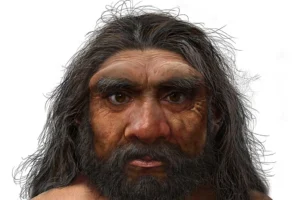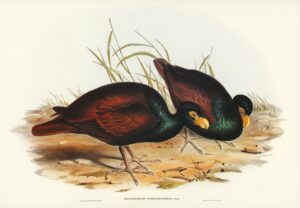Humans have been the only primate in North America for millions of years. The last non-human primate on the continent was the Ekgmowechashala, a small, lemur-like creature. By reconstructing Ekgmowechashala’s family tree, researchers have discovered its remarkable story.
Cooling climate killed American primates
Primates first appeared in North America 56 million years ago at the start of the Eocene and roamed the region for over 20 million years. But as the climate cooled, the primates were unable to handle the harsher conditions and went extinct. Then millions of years later, the Ekgmoweschashala appeared.
This species is a mystery to paleontologists. How did the small primate get to North America? Did it evolve here? Or did it migrate? No one knew how it fit into the primate family tree.
The researchers used fossils of an Ekgmoweschashala and a Palaeohodite — an even older Chinese primate — in an attempt to answer these questions. A Palaeohodite fossil first turned up in China in the 1990s, 30 years after the discovery of the Ekgmoweschashala fossil in Nebraska. The upper molars of both species are incredibly similar. The team eventually concluded that there is an evolutionary relationship between the two.
It seems that Ekgmowechashala evolved in Asia and made its way across land to North America when the two continents were still connected.
“Our analysis dispels the idea that Ekgmowechashala is a relic or survivor of earlier primates in North America,” lead author Kathleen Rust said. “Instead, it was an immigrant species that evolved in Asia and migrated to North America during a surprisingly cool period, most likely via Beringia.”
Later, Native Americans followed the same route across the icy Beringian region.
Rocky Mountain rainforests
The primate settled in the forests of the Rocky Mountains. At the time, these were more akin to rainforests, much warmer and wetter than those in modern North America.
This migration happened after the climate shift killed off other primates in the region, around 33 million years ago. The little primate is a brilliant example of the “Lazarus effect,” in which a creature, or type of creature, reappears after its presumed extinction.
Ekgmowechashala shows up in the fossil record very suddenly, four million years after its closest relatives died off.
“Several million years later [than the other primates], Ekgmowechashala shows up like a drifting gunslinger in a Western movie, only to be a flash in the pan as far as the long trajectory of evolution is concerned,” co-author Chris Beard colorfully explains.
The story is relevant today. “Around 34 million years ago, all of the primates in North America couldn’t adapt and survive,” said Rust. “North America lacked the necessary conditions for survival. This underscores the significance of accessible resources for our non-human primate relatives during times of drastic climatic change.”






